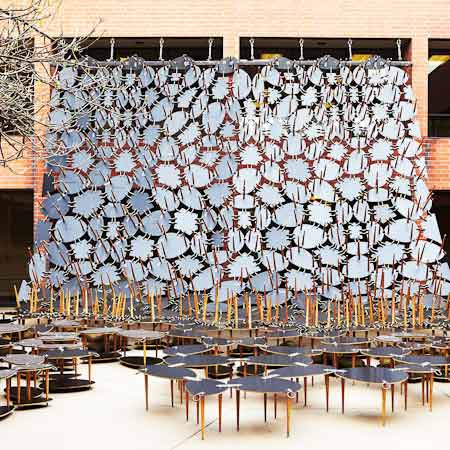
Table Cloth by Ball-Nogues
Los Angeles designers Ball-Nogues Studio have collaborated with UCLA Architecture and Urban Design students to create a courtyard stage set made of coffee tables.
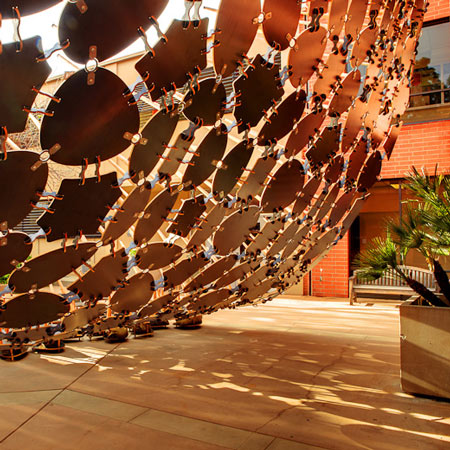
Called Table Cloth, the installation features furniture components joined together to form an platform and backdrop hanging from one wall of the courtyard.
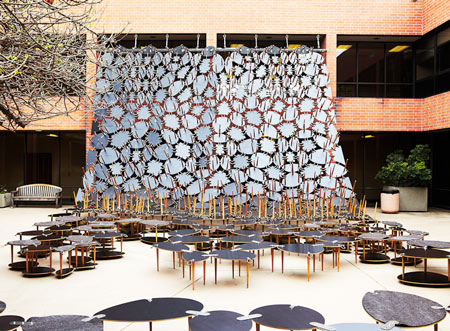
It will be used throughout the summer as a backdrop for performances by the UCLA Herb Alpert School of Music, with audience members sitting on and gathering around the low tables.
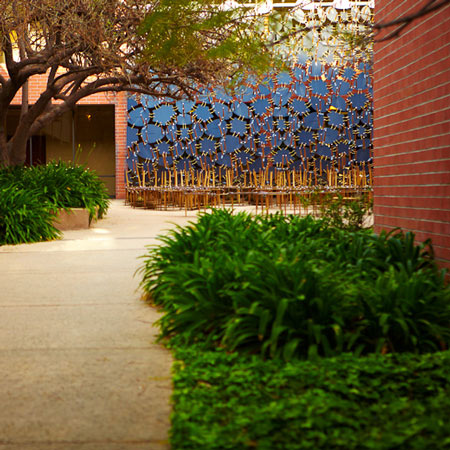
Once deconstructed, the components will be re-assembled as individual pieces of furniture and redistributed.
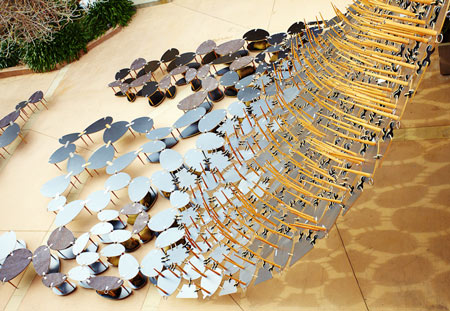
Here's some more information from Ball-Nogues:
'Table Cloth' at Schoenberg Hall
UCLA Architecture and Urban Design unveils innovative 'Table Cloth' installation
The UCLA Herb Alpert School of Music has a new performance space in the courtyard of the Schoenberg Music Building on campus. "Table Cloth," a collaboration between faculty and students, is an innovative and experiential set piece that will serve as a backdrop for the performing arts and everyday social interaction.
The concept for the site emerged from a collaborative process between the UCLA Herb Alpert School of Music, UCLA Architecture and Urban Design (AUD) and the UCLA Department of Design | Media Arts. AUD lecturer Benjamin Ball and collaborating partner Gaston Nogues, of the Los Angeles–based Ball-Nogues Studio, completed "Table Cloth" after leading AUD graduate students in a class in which they explored different design ideas for the Schoenberg site.
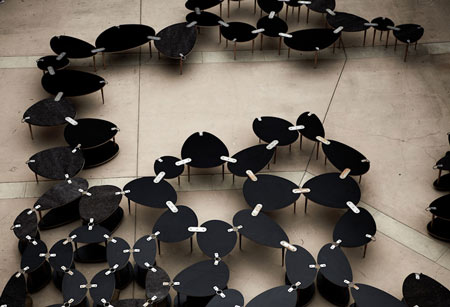
The students discussed how to create an impermanent architectural installation for the performing arts that would be sustainable and allow the building components to be easily adapted for other purposes once the usefulness of the performance space is complete.
"Table Cloth" is comprised of hundreds of individual low, coffee-style tables and three-legged stools. The tables and stools link together collectively to create a "fabric" that hangs from the east wall of the courtyard. When it meets the ground, "Table Cloth" unrolls to form an intimate in-the-round performance area. The audience can sit on the tables and stools within this area.
"Tables are places for social interaction," Ball said. "Dining tables, specifically, facilitate organization and communication within the typical American home. We see this project like the cloth adorning a dining table; however, at Schoenberg, it will adorn the courtyard, an important social hub, and will facilitate community at the scale of the university."
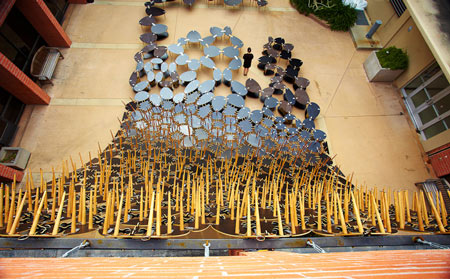
After the structure has served its use as a performance space, the components comprising the installation will be dismantled to become smaller-scaled household commodities, tables and seating. This process, referred to as "cross-manufacturing" by Ball-Nogues, creates small products made from the parts of a larger product. It moves beyond recycling, which down-cycles material into a less valuable state.
The space will host a variety of community-oriented activities, from musical practice to performance, dance to lectures, and social interaction to academic discussions. Because of the work's size and the materials used, its presence will reduce reverberation and alter other acoustical phenomena within the space. "Table Cloth" will embellish the courtyard during the 2010 spring and summer quarters.
Funding for the project was made possible by grants from the Graham Foundation for Advanced Studies in the Fine Arts and the UCLA Arts Initiative. Structural engineering was provided by Buro Happold, Los Angeles (Matthew Melnyk, lead engineer).
See also:
.
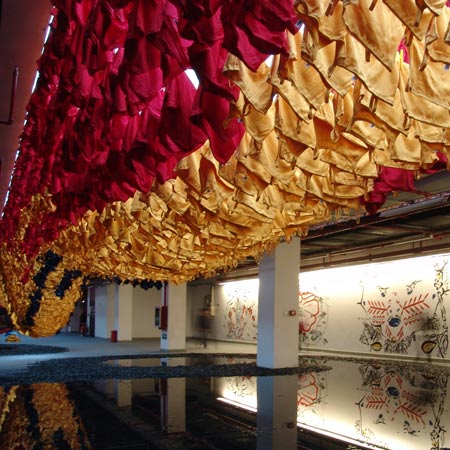 |
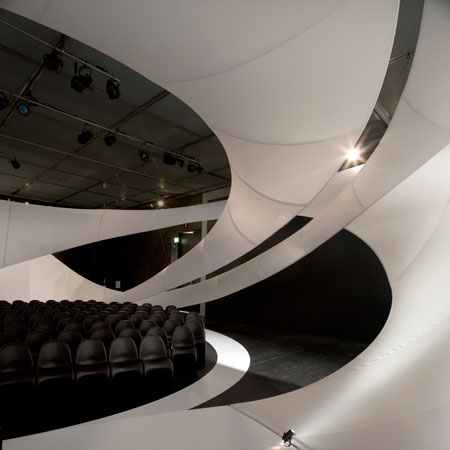 |
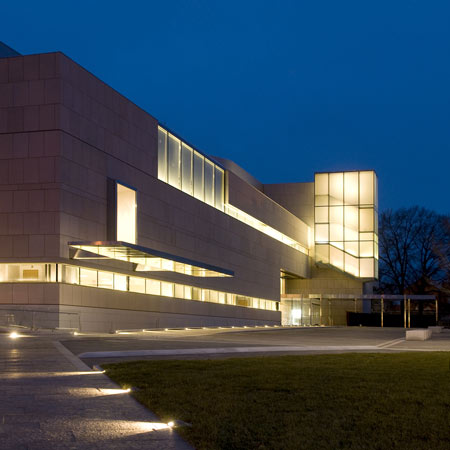 |
| Built to Wear by Ball-Nogues Studio |
JS Bach Chamber Music Hall by Zaha Hadid |
More architecture stories |